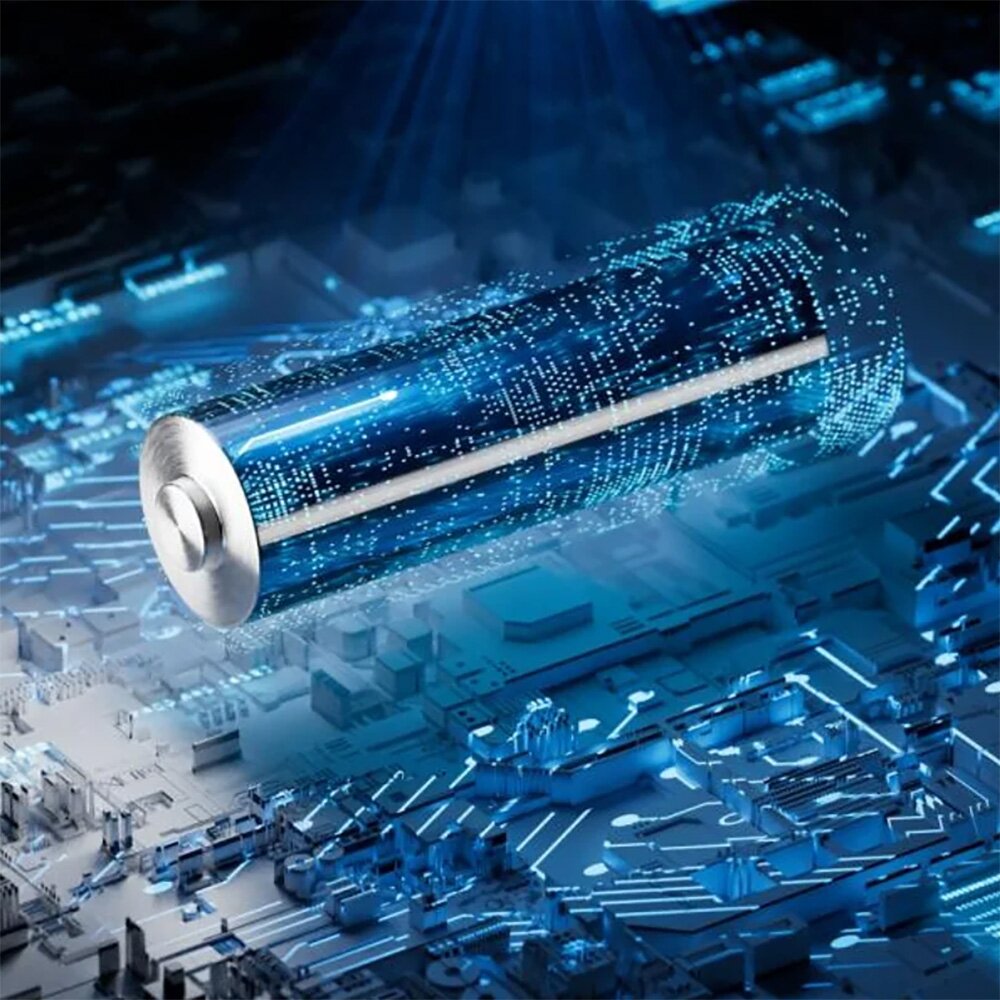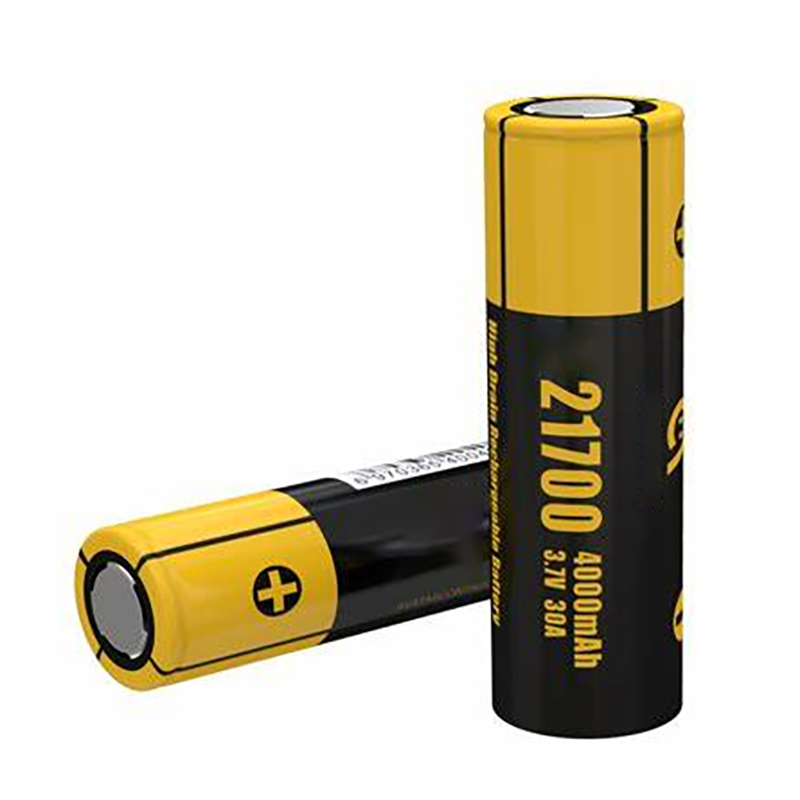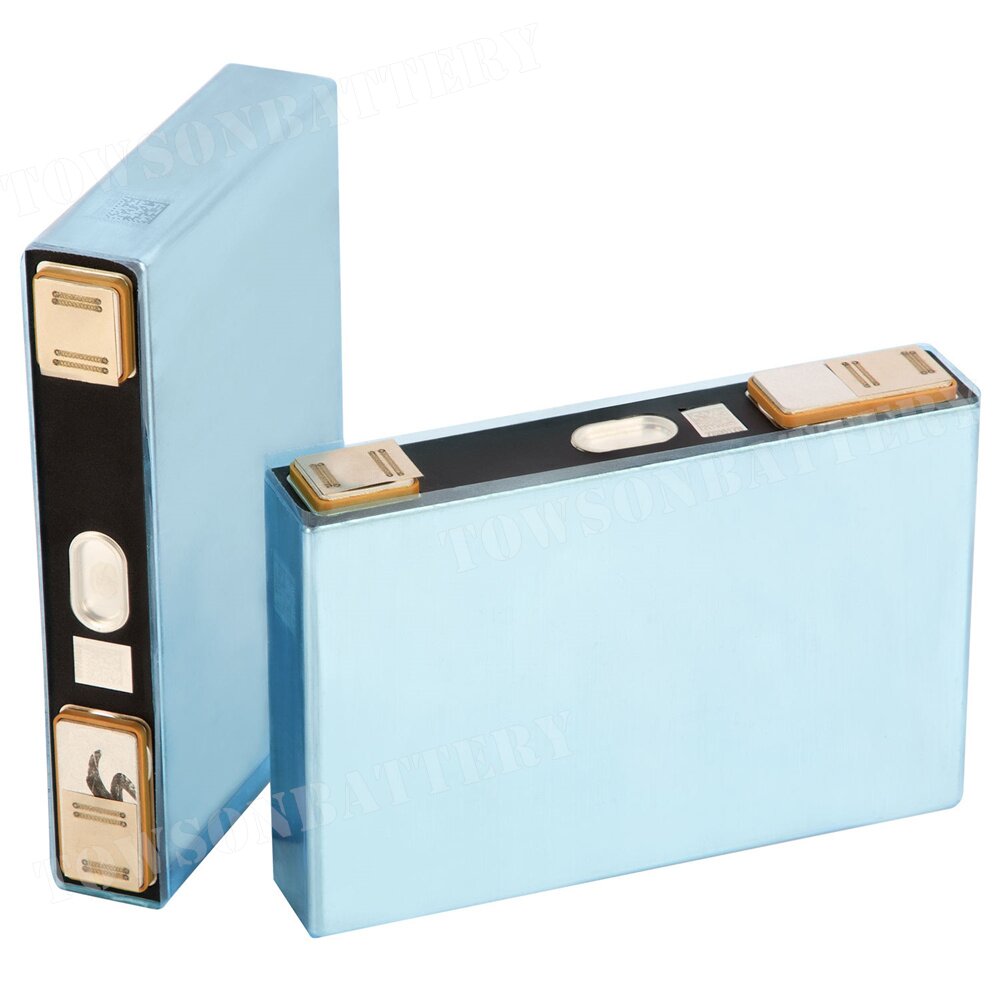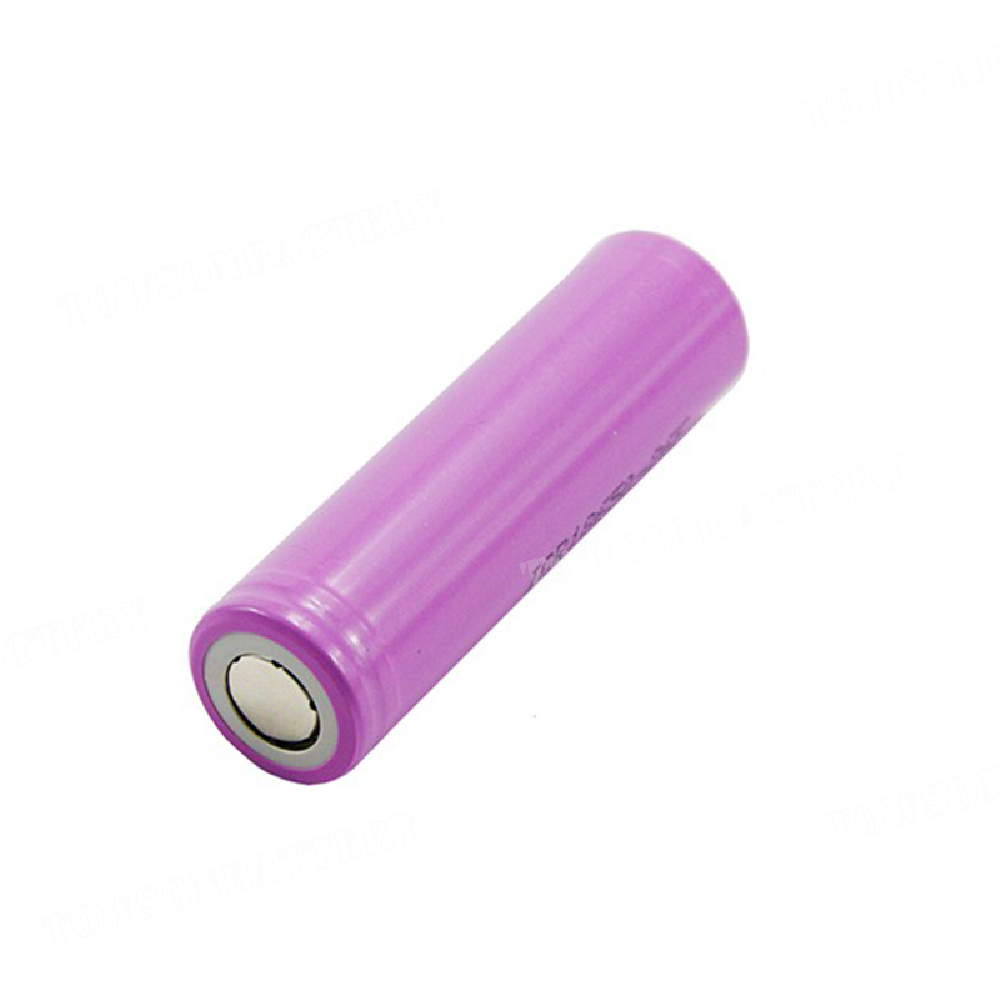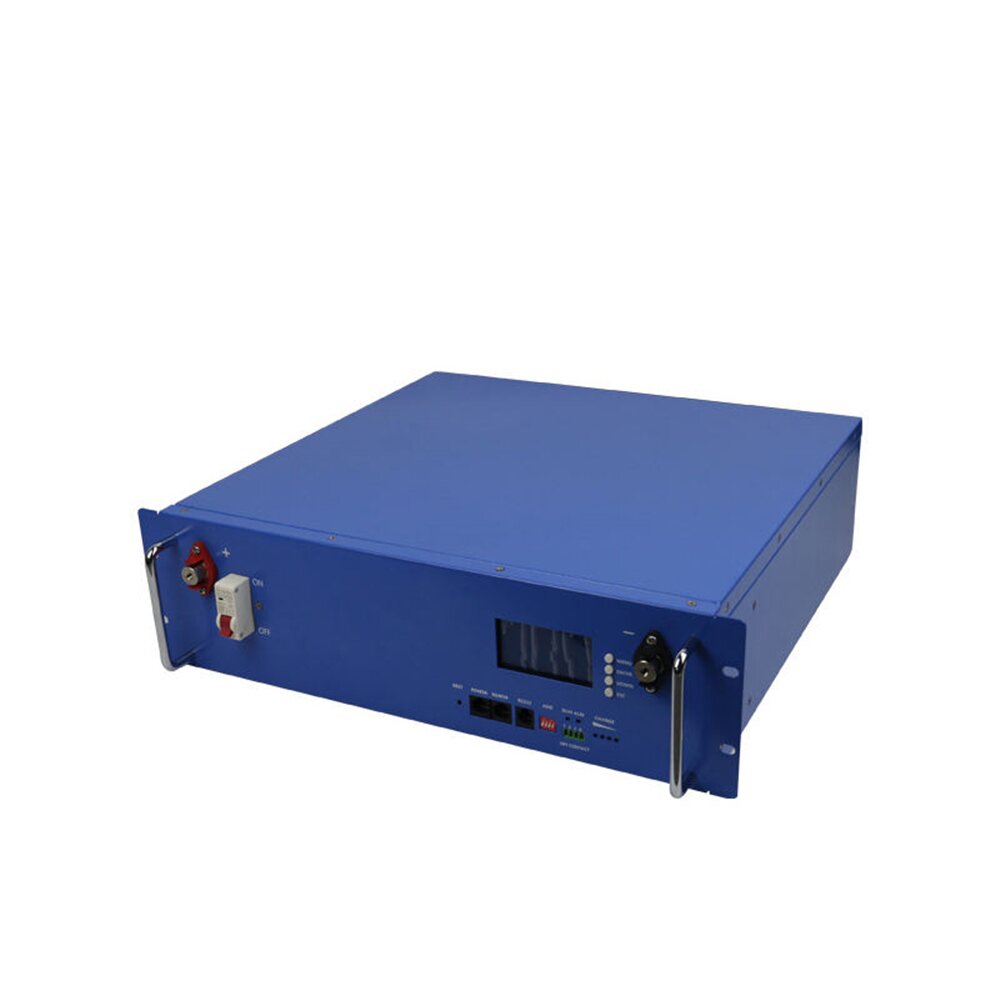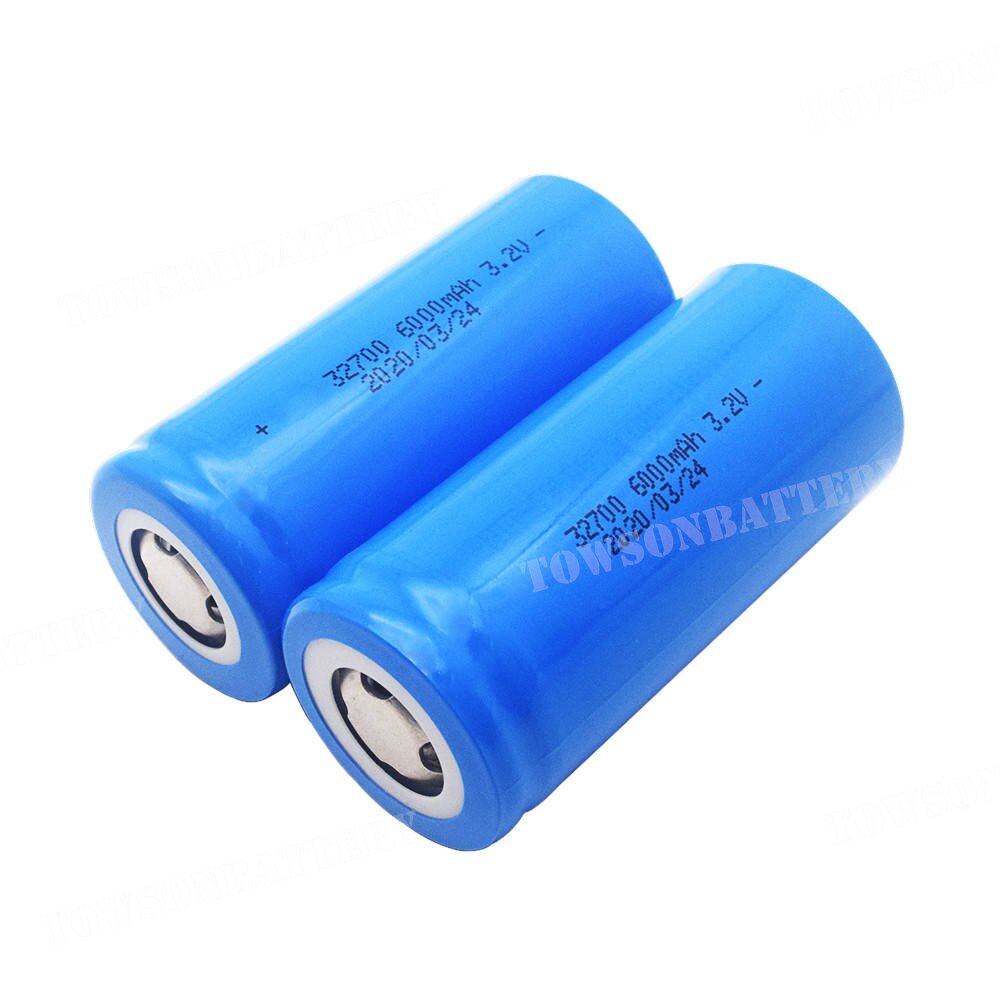What is A Gel Battery and How does it Compare to A Lithium Battery
A Comprehensive Comparison of Gel Batteries and Lithium Batteries for Renewable Energy Systems, Electric Vehicles, and Backup Power Supplies.
In this article, we will compare the features, benefits, and drawbacks of both battery types to help you make an informed decision on which one is right for your specific needs.
Gel Battery vs Lithium Battery | Which is Better for Renewable Energy, Electric Vehicles, and Backup Power?
In recent years, there has been an increasing demand for batteries in various applications, including renewable energy systems, electric vehicles, and backup power supplies. With the rise of clean energy technologies and the need for reliable and efficient power storage solutions, batteries have become a critical component of many modern systems. As a result, the market for batteries has grown exponentially, with new types and technologies emerging every year.
Two of the most popular battery technologies on the market today are gel batteries and lithium batteries. While both types of batteries have their own strengths and weaknesses, they are often compared and debated in terms of which is better. In this article, we will take a closer look at gel batteries and lithium batteries, compare their features and performance, and explore which one might be the better choice for your particular needs. Whether you are a homeowner looking to install a solar system, a business owner considering backup power options, or an electric vehicle enthusiast, this article will provide you with a comprehensive guide to gel batteries and lithium batteries.
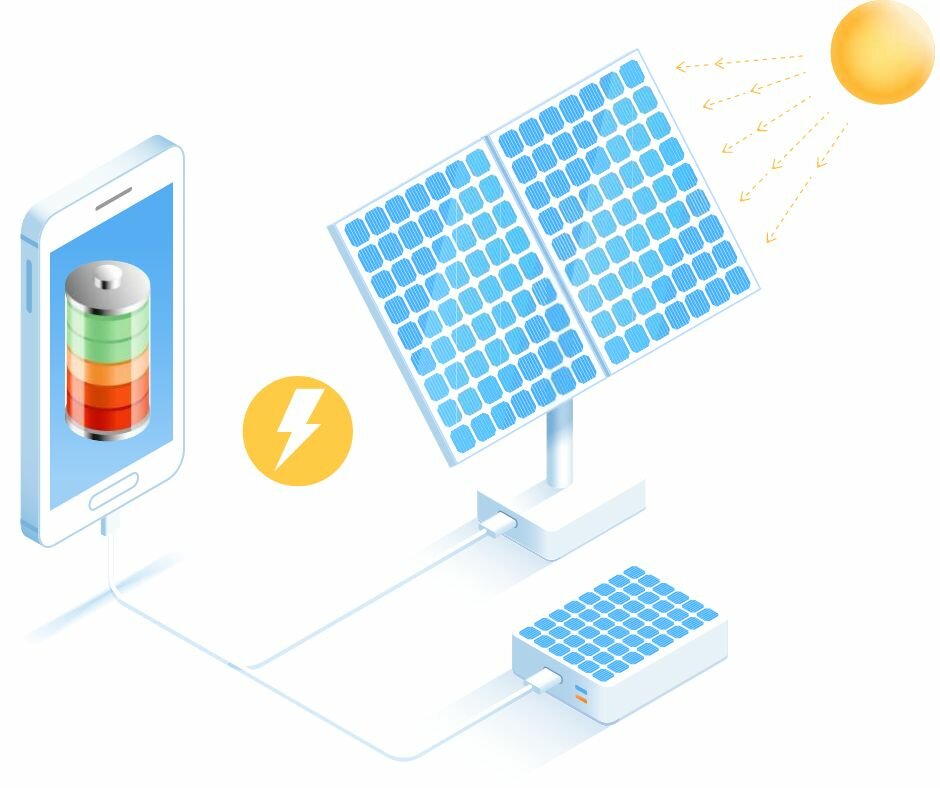
What is a Gel Battery?
A gel battery, also known as a gel cell battery, is a type of lead-acid battery that uses a gel electrolyte to store and release energy. Unlike traditional flooded lead-acid batteries, which use liquid electrolytes, gel batteries contain a thick paste-like substance that is immobilized and sealed within the battery casing. This gel substance acts as a separator between the lead plates and the electrolyte, which helps to reduce the risk of leaks and spills.
How Does a Gel Battery Work?
The basic principles of a gel battery are similar to those of other lead-acid batteries. When the battery is charged, a chemical reaction occurs between the lead plates and the electrolyte, which produces electrical energy. When the battery is discharged, the reaction is reversed, and the electrical energy is converted back into chemical energy in the form of lead sulfate on the plates and sulfuric acid in the electrolyte.
Main Components of a Gel Battery
The main components of a gel battery include:
| Component | Description |
| Lead Plates | Positive and negative plates made of lead and lead oxide. They are the primary source of chemical energy in the battery. |
| Electrolyte | Mixture of sulfuric acid and silica fume converted into a gel-like substance. It serves as a medium for the chemical reaction that produces electrical energy. |
| Gel Matrix | Thick paste-like substance that contains the electrolyte and is immobilized within the battery casing. It acts as a separator between the lead plates and the electrolyte, reducing risk of spills and leaks. |
Overall, gel batteries are a reliable and durable type of battery that can provide long-lasting power for a variety of applications. They are commonly used in renewable energy systems. Further uses are in backup power supplies, and some industrial equipment due to their ability to withstand deep discharges and extreme temperatures.
Still, as we will explore in another section, there are also some drawbacks to using gel batteries. These may make them less suitable for certain applications.
The Differences Between a Gel Battery and a Conventional Flooded Lead-Acid Battery Explained
The choice between a gel battery and a flooded lead-acid battery will depend on various factors. These include the application, usage, and budget.
Gel batteries are generally considered to be a safer and more convenient option for renewable energy systems, et al. This is due to their lower maintenance requirements and longer lifespan. On the other side of the scale, flooded lead-acid batteries are still widely used for a variety of applications. Further, they may be a more suitable option in certain cases.
What is a Lithium Battery?
Lithium batteries are a type of rechargeable battery that use lithium ions to store and release electrical energy. They are commonly used in portable electronic devices such as smartphones, laptops, and tablets, as well as in electric vehicles and renewable energy systems.
How it Works
A lithium battery works by moving lithium ions between the cathode (positive electrode) and anode (negative electrode) through the electrolyte. When the battery is being charged, the lithium ions move from the cathode to the anode, where they are stored. When the battery is being discharged, the ions move back to the cathode, producing an electric current.
Main Components
| Component | Function |
| Cathode | Positive electrode that stores lithium ions during charging |
| Anode | Negative electrode that releases lithium ions during discharging |
| Electrolyte | Chemical medium that allows the movement of lithium ions between cathode and anode |
Differences from Lead-Acid Batteries
There are several key differences between lithium batteries and lead-acid batteries:
| Factor | Lithium Battery | Lead-Acid Battery |
| Chemistry | Uses lithium ions | Uses lead plates and sulfuric acid |
| Performance | Higher energy density, provides more power | Lower energy density, provides less power |
| Safety | Generally considered safer due to reduced risk of leakage and lack of toxic lead | More prone to leakage and contains toxic lead |
| Cost | More expensive but decreasing with improving technology | Less expensive but less advanced technology |
Please write the following section in easy reading language using these headings. Do you understand?
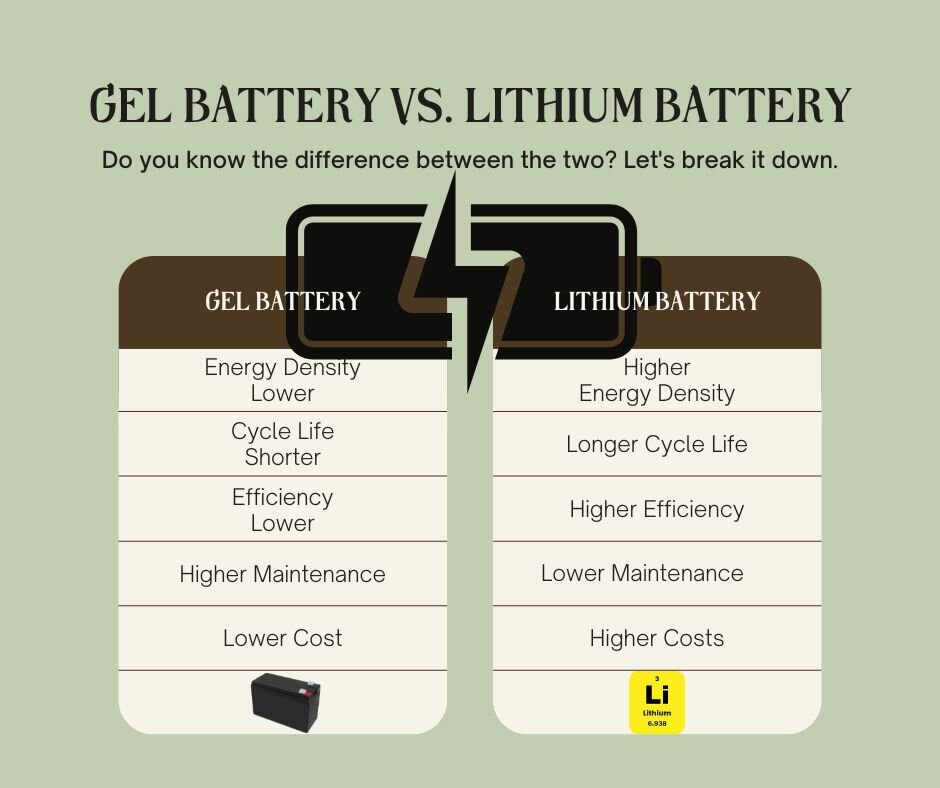
Related Reading: What is a Home Backup Battery.
Gel Battery vs Lithium Battery | A Comparison
Gel batteries and lithium batteries are two popular battery technologies that are used in a variety of applications. Here’s how they compare in terms of key features.
Energy Density
Lithium batteries have a higher energy density than gel batteries, which means they can store more energy per unit of weight or volume.
Cycle Life
Lithium batteries also typically have a longer cycle life than gel batteries, which means they can be charged and discharged more times before their capacity starts to degrade.
Efficiency
Both types of batteries are generally efficient, but lithium batteries are slightly more efficient than gel batteries.
Maintenance
Gel batteries require more maintenance than lithium batteries because they are more sensitive to overcharging and need to be charged at specific voltages and currents.
Cost
Gel batteries are typically less expensive than lithium batteries, although the cost of lithium batteries has been decreasing over time.
Advantages and Disadvantages in Different Applications
The choice between a gel battery and a lithium battery depends on the specific application. Here are some advantages and disadvantages of each technology in different applications.
Off-Grid Solar Systems
- Gel batteries are a good choice for off-grid solar systems because they are less expensive and require less maintenance.
- In contrast, lithium batteries have a higher energy density and longer cycle life.
Electric Cars
- Lithium batteries are the preferred choice for electric cars. They have a high energy density and can be charged quickly.
- Gel batteries are not commonly used because they are heavier and less efficient than lithium batteries.
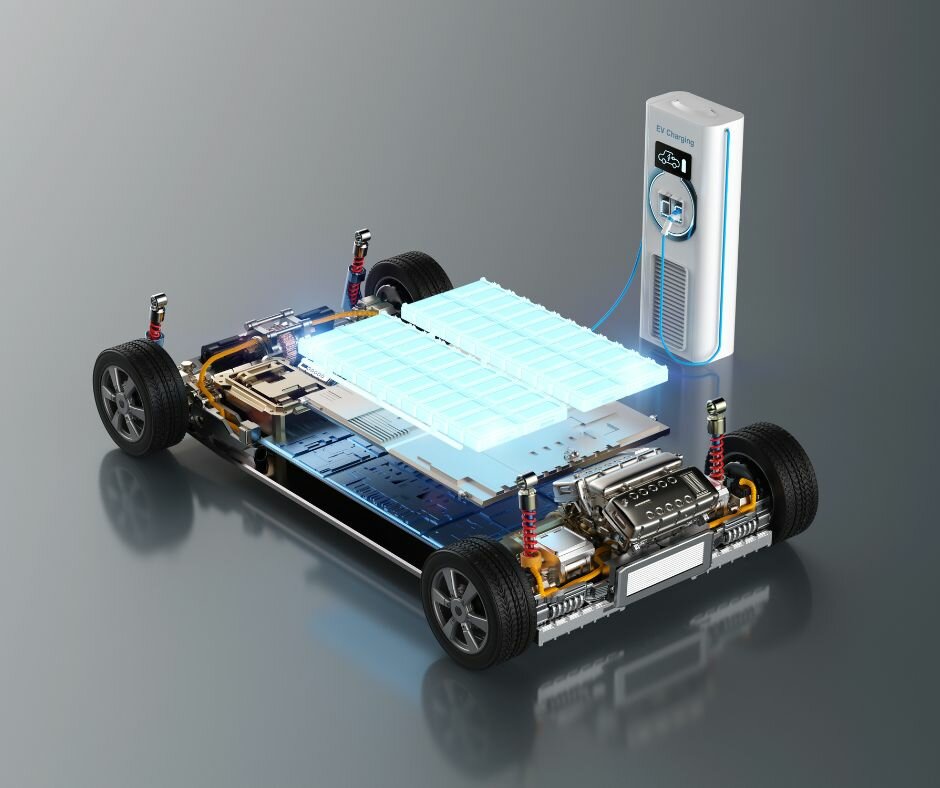
Marine Vessels
- Gel batteries are a good choice for marine vessels. They are less prone to leaking and are more resistant to shocks and vibrations.
- Lithium batteries are also a good choice for marine vessels because they have a high energy density and can provide long-lasting power.
Real-World Examples
| Application | Gel Battery Use | Lithium Battery Use |
| Backup power supplies | Commonly used for homes and businesses | Not typically used |
| Solar systems (smaller) | Commonly used | Not typically used |
| Electric cars | Not typically used | Commonly used |
| Smartphones | Not typically used | Commonly used |
| Other portable electronics | Not typically used | Commonly used |
| Performance comparison | Performs better in extreme temperatures or rough conditions | Preferred for high energy density and long cycle life |
Did you hear about the battery that got charged with a credit card? Yeah, it was a charge card!
Which Battery is Better?
Based on the comparison of key features, each battery technology has its own advantages and disadvantages.
Here are some recommendations for choosing between gel and lithium batteries:
- Lithium battery: High energy density and long cycle life
- Gel battery: Performs well in extreme temperatures or rough conditions
Below are some factors to consider when choosing between the two technologies for specific applications.
Climate
Gel batteries may perform better in colder temperatures, while lithium batteries may perform better in hotter temperatures.
Load profiles
Gel batteries may be more suitable for applications with low discharge rates. In contrast, lithium batteries may be more suitable for applications with high discharge rates.
Available space
Lithium batteries are generally more compact and lightweight than gel batteries. This may make them more suitable for applications with limited space.
Ultimately, the choice between gel and lithium batteries depends on the specific needs and requirements of the application at hand.
Battery Maintenance
Proper maintenance is key to getting the most out of your gel or lithium battery. Here are some tips to help you keep your battery in top shape.
- Charge your battery properly: Always follow the manufacturer’s instructions for charging your battery. Overcharging or undercharging can damage your battery and reduce its lifespan.
- Monitor your battery: Keep an eye on your battery’s voltage and temperature, especially when it’s in use. This will help you detect any issues early on and prevent damage.
- Store your battery correctly: If you’re not using your battery for an extended period, store it in a cool, dry place. Make sure it’s not exposed to extreme temperatures or moisture.
- Keep your battery clean: Dirt and debris can cause your battery to overheat, so it’s important to keep it clean. Use a soft, dry cloth to wipe down your battery regularly.
By following these simple tips, you can ensure that your gel or lithium battery lasts as long as possible and performs at its best.
You may also like our blog on Commercial and Industrial Lithium Battery Applications.
Wrapping Up: Key Takeaways and Further Considerations
Choose the right battery technology for your needs based on factors such as energy density, cycle life, efficiency, maintenance, and cost. Gel batteries and lithium batteries both have their advantages and disadvantages depending on the application. This makes it essential to consider the specific requirements before making a decision.
Ensure proper charging, monitoring, and storage keeps your batteries working for longer. Regular maintenance and upkeep can also help to optimize the performance and lifespan of your batteries. For further reading or research, there are many resources available online and in print on battery technology. They include new developments and emerging trends in the industry. Whether you’re an energy specialist or just looking to power your home or business, it helps to understand the differences between gel and lithium batteries. This can help you make informed decisions and get the most out of your energy storage solutions.
You May Also Like:
- What are 4680 Batteries and 18650 Batteries | Which is Better
- What is A Lithium-Ion Deep Cycle Battery
- What is 6V Battery vs 12V Battery | Comparative Study of 6V and 12V Batteries
- Comparing Each Function of 26650 Battery and 18650 Battery Which One is Better
- Comparing Lithium Polymer to Lithium-Ion Batteries
- What is a Lithium Titanate Battery
Share
- Ins

Senior Writer at Towsonbattery.com
William, a professional writer and battery energy expert with extensive experience in energy technology, able to provide clear and comprehensive presentations for both novices and experts in the energy field…
 Towson Battery
Towson Battery

